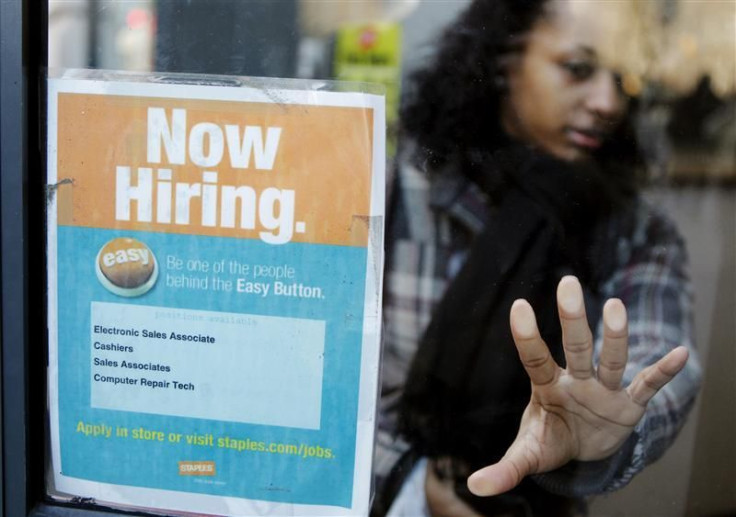Jobless Claims Tumble Back To 4-Year Low of 351,000

Claims for jobless benefits fell back to a four-year low of 351,000, providing more evidence that the labor market is healing.
In the week ended March 10, applications for unemployment insurance payments declined by 14,000 to 351,000, according to data from the Labor Department issued Thursday in Washington. Economists polled by Reuters had forecast claims unchanged at 356,000.
The four-week moving average, considered a better measure of labor market trends because it smooths out weekly fluctuations, was unchanged from the previous week's revised average of 355,750 for first-time benefit applicants.
It's improving, Steve Blitz, chief economist at ITG Investment Research, said before the report was released. I'm not going to tell you that it's rosy and great in terms of where we are. But if you look at it as a trend, it's slowly getting better.
Blitz noted that the jobs that are coming back indicate a shift in the economy. He said the economy is shifting from one that was based on real estate, real estate-related finance and supported by an overleveraged consumer, to an economy that is rebuilding slowly, but rebuilding its industrial sector for export and import substitution.
Job gains are of great importance because they lead to income growth and that supports consumer spending, which accounts for more than 70 percent of U.S. economic growth.
U.S. employers hired 227,000 workers in February -- the third straight month more than 200,000 workers found jobs. The unemployment rate, however, held at a three-year low of 8.3 percent. That rate has averaged 5.8 percent since 1948 in healthier times.
According to the jobs calculator available at the Atlanta Fed website, employers will have to maintain the current rate of creating roughly 200,000 jobs per month to get the unemployment rate down to 5.8 percent by November 2014. The U.S. lost more than six million jobs during the recession.
The unemployment rate has declined notably in recent months, Federal Reserve officials said after meeting Tuesday. Even so, the Fed didn't change its view that the unemployment rate remains elevated.
The rate-setting Federal Open Market Committee also said it decided to keep near-term interest rates anchored at ultra-low levels and, as expected, offered few clues about plans for further easing.
Continuing Claims
The number of people filing for benefits after an initial week of aid decreased by 81,000, to 3.34 million in the week ended March 3.
The continuing claims figure doesn't include the number of Americans receiving extended benefits under federal programs.
The four-week moving average for the week ended March 3 fell 25,250, to 3.39 million from the preceding week's revised average of 3.42 million.
Stock index futures jumped Thursday on the jobless claims report. S&P 500 futures gained 24.5 points and Dow Jones Industrial average futures were up 28 points.
© Copyright IBTimes 2024. All rights reserved.












